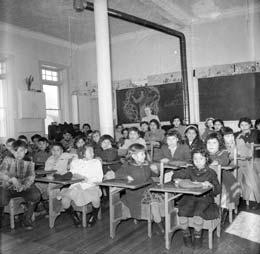A window into Canada’s historical shame

When you hear the words “land claims” relating to Canada's First Nations, you might only think about contentious cases that have been sensationalized in the media over the years. What you may not know, is that far more claims have been peacefully negotiated and settled, through partnerships between the Government of Canada and First Nations communities across the country.
Here are some other facts you may not know about specific claims:
• Specific claims are not necessarily related to land. They deal with grievances of First Nations related to Canada's obligations under historic treaties or the way the government managed First Nation funds or assets in the past.
• The Canadian government has policies and a process in place to resolve outstanding land claims through negotiated settlements.
• Since 2007, Canada has settled over 80 specific claims through negotiated agreements. These claims represent over $1 billion.
• No one is forced to sell their private property as a result of a specific claim. First Nations receive payment. Any land purchases are on a willing-buyer, willing-seller basis.
• First Nation communities have used settlement funds for a range of initiatives that have long-term economic and social benefits. Many re-invest in their community through education, training and health programs, or by purchasing land on the open market. Others have established profitable businesses, independently and in partnership with surrounding communities.
June is National Aboriginal History Month, an opportunity for all Canadians to learn more about the cultural heritage, traditions, diversity, and many accomplishments of the First Nations, Métis and Inuit..
Educators interested in teaching students about the legacy of Indian Residential Schools in Canada, have a powerful new visual aid, thanks to a stained glass window in the Parliament building in Ottawa.
The window, which was presented to the Speaker of the House in November 2012 by the Minister of Aboriginal Affairs and Northern Development Canada, commemorates the legacy of the Schools and the government's historic apology to former students and their families in 2008.
Between the 1870s and the 1990s, some 150,000 Aboriginal children were placed into government-operated residential schools. More than 133 schools existed in Canada, and in addition to the trauma of living apart from their families, many students suffered physical and mental abuse.
Giniigaaniimenaaning, which means “looking ahead,” was designed by Métis artist Christi Belcourt. Her work was chosen by a committee of leading Aboriginal art experts and former Residential School students.
Douglas Cardinal, a Canadian architect who was a member of the panel, describes the window as a reaching out for understanding and forgiveness on behalf of all Canadians.
“It is important to let Canadians know the tragedy around Residential schools, because most Canadians do not know that part of their history.” says Cardinal. “It is important for the public to know, so that people have the opportunity of undoing the damage that's been done to their language, culture, communities and people.”
In 2006, the federal government reached an agreement relating to the schools. The largest class action settlement in Canadian history, the agreement includes financial compensation for eligible former students, and initiatives to support healing and reconciliation.
Leave a comment









